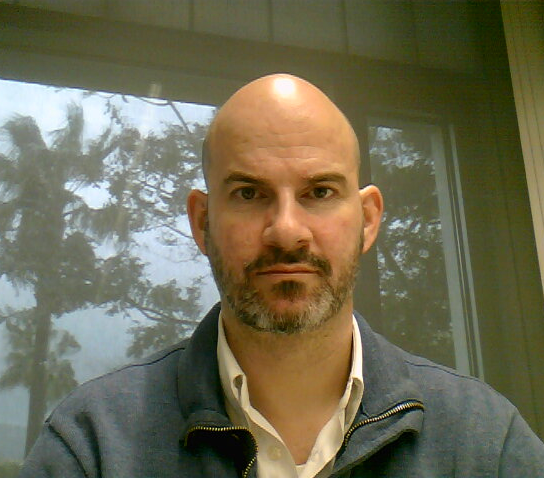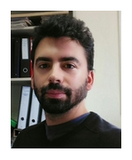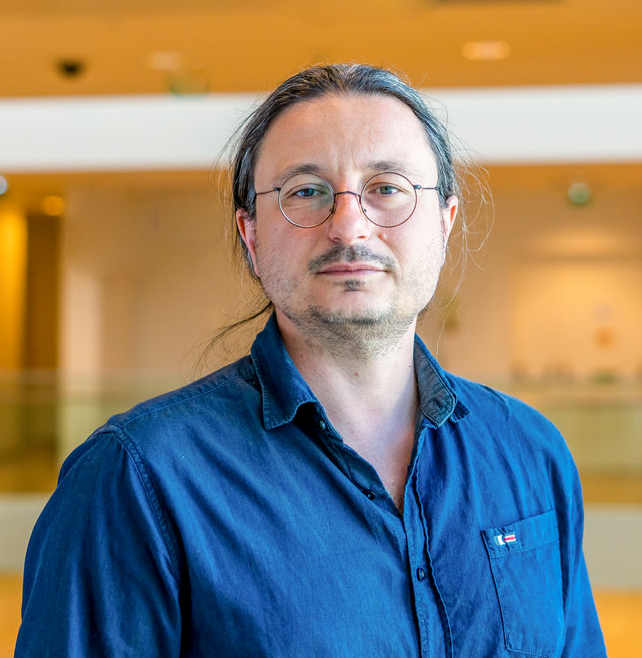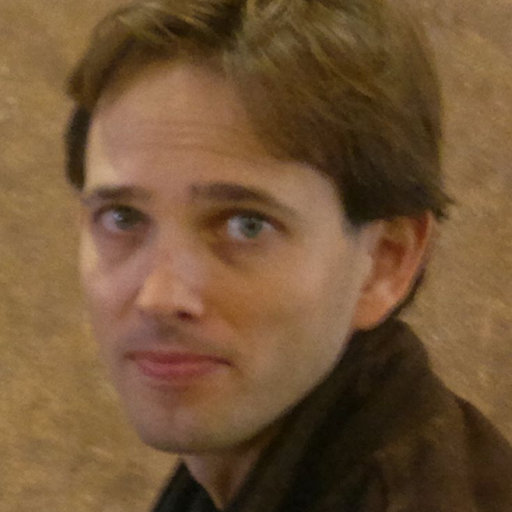About the ACP research team
Main researcher
- Dr. Juan Massó Bennásar (University Professor)
Collaborators
- Dr. Antoni Luis Arbona Nadal (Technical, Management and Administrative and Service Staff)
- Dr. Rodrigo Picos Gayá (University Professor)
- Dr. Antonio Cerrato Casado (Assistant Doctor Professor)
- Dr. Andreu Rigo Gost (Assistant)
- Dr. Joan Stela Fiol (University Tenured Professor)
Members
- Dr. Carles Bona Casas (University Tenured Professor)
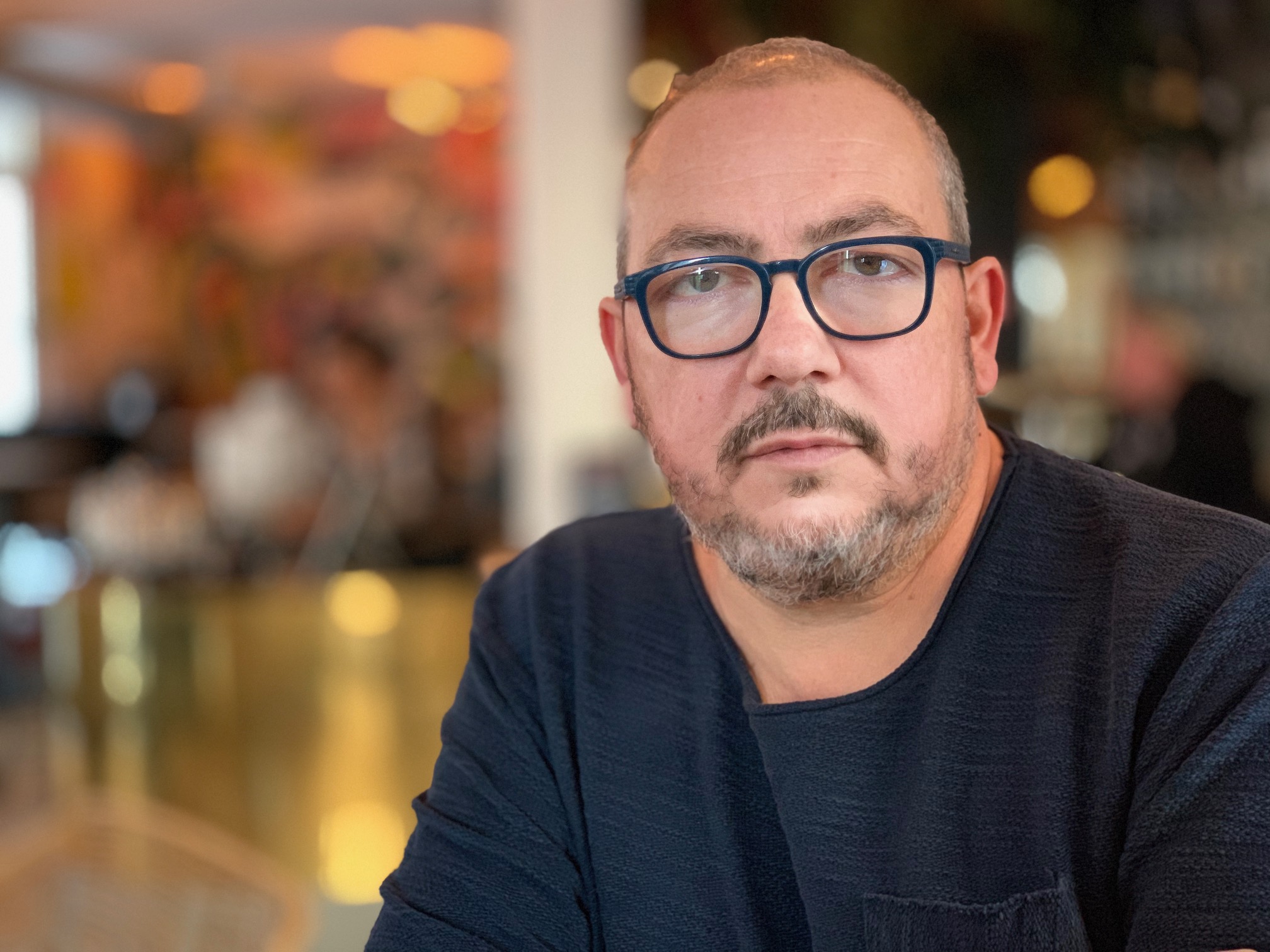 Dr. Joan Massó (cap del grup de recerca)
Dr. Joan Massó (cap del grup de recerca)
After getting his Ph. D in Physics at the University of the Balearic Islands (UIB) in 1992, where he published the first 3D code with a hyperbolic formulation of the Einstein Equations, Joan Massó was postdoctoral fellow in 1993 at the National Center for Supercomputing Applications (Urbana-Champaign, Illinois, USA). In 1994, he became NCSA Research Scientist, focusing his work on black hole simulations, advanced numerical methods and supercomputing techniques. From 1996 to 1999, he was Senior Researcher and Czar of the Supercomputing center at the Max Plank Institut für GravitationPhysik (Potsdam, Germany). There he co-created one of the first and more extensible open multiphysics computational frameworks (cactuscode.org), basis of the Einstein Toolkit for applications in Numerical Relativity. He was also Visiting Professor at Washington University (Saint Louis, USA). In 1999, Joan came back to Mallorca as Associate Professor of Theoretical Physics and Supercomputing coordinator at the UIB, where he promoted the first beowulf High Performance Cluster in Spain in a joint project with IBM. He also got involved in the Government of the Balearic Islands, as lead technical advisor in 1999-2000. In 2000, he founded Gridsystems, which became one of the leading European private companies in the development and commercialization of Grid Computing middleware. He architected Innergrid, winner of an European Union IST prize in 2003, and its evolution into Fura, a general private cloud Open Source middleware, with customers in finance, health, telecommunications and other industries. As CEO of Gridsystems, he was responsible of a team of 40 people and he involved the company in 6 European research projects (FP6,FP7) and 3 Spanish CENITs with a total budget of over 160 million euros. In 2010, Joan went back full time to Academia. He actively participates in Simflowny, an extensible open platform for scientific modeling and simulation, which automatically generates advanced parallel code capable of exascale performance. Joan has a wide experience in many areas of technology, as well as entrepreneurship and company growth. He mentors startups and acts as advisor to several Venture Capital funds. He has published dozens of scientific papers, with around 3000 citations. His work has been cover of Science, Computer and Physics World, and he has published 6 papers in the prestigious Physical Review Letters. Today, he is teaching Computer Assisted Physics (with Python), Relativity and Cosmology, Distributed Computing (with Julia) and Elements of Numerical Relativity. Since 2018, he is the head of the ACP (Advanced Computational Physics) group of the UIB Physics department.
M.S. Physics 1998, M.S. Chemistry 2003 with first class honours distinction award (Premio Extraordinari de Llicenciatura), and Ph.D. Physics September 2005 at the University of the Balearic Islans (UIB). Postdoctoral stay in Germany (03/2006-09/2010): 37 months at Frankfurt Institute for Advanced Studies (FIAS) [Junior Fellow, Postdoc del MEC, Contrato FECYT], and 19 months in the Institute for Computational Physics (Univ. Stuttgart). In October 2010 I came back to UIB combining both research and educational duties: first as “Profesor Ayudante Doctor”, then as postdoc from the CAIB, and since 09/2016 as “Profesor Contratado Doctor Interino”. ANECA certification for PCD position in 2009, and for “Titular de Universidad” since 2015. I have been involved in 9 research projects, and director of a Master thesis and two final year degree project. I have been expert reviewer for the Research Council KU Leuven (Belgium) and referee of several top journals: Langmuir, Macromolecules, Chem. Letters, Macromolecular Theory and Simulations, JAC, EPJ-E and JMMM. As a lecturer I have imparted more than 1900 hours at university level and published one book about differential equations (Ed. Síntesis). My main fields of research are the physics of polymers and colloids, as well as the rheology and tribology of those systems. In addition, I also do research in biophysics, and the design of new optimized algorithms for long-ranged forces. I am an expert on Monte Carlo, Langevin and Multi Particle Collision Dynamics, as well as in atomistic simulations.
I was awarded with a FPU grant by the spanish ministry to pursue my PhD in the field of numerical relativity at the University of the Balearic Islands (UIB) within a PhD programme with a quality seal from the spanish quality agency ANECA. I developed an efficient high resolution numerical method showing its superior performance in relativity, fluid dynamics and magnetohydrodynamics (MHD). The method allowed me to successfully perform numerical simulations of black holes with a formalism that provides gravitational wave patterns with unprecedented precision, improving the existing formalisms by at least an order of magnitude. I did a research stay at the Max-Planck Institute for Gravitational Physics in Germany where I co-wrote a book about numerical relativity and relativistic MHD, which is in its 2nd edition. I was awarded with a Marie Curie ITN postdoctoral contract at the University of Amsterdam (UvA) where I supervised 1 master student and 2 PhD students and I broadened my numerical expertise becoming experienced in agent based and Lattice-Boltzmann methods by performing numerical biomedical simulations of fluid and solid mechanics corroborated against experiments. I also collaborated in establishing the paradigm of distributed multiscale computing, bridging the fields of high performance computing and multiscale applications. There I participated in 3 european projects. I also led the writing of a successful european project proposal (SOPHOCLES) that became funded, establishing a collaboration between the UvA and the UIB. Moreover, I obtained computing time in supercomputers such as SuperMUC (fastest supercomputer in Europe at the time). I was then hired as postdoctoral researcher at the University of A Coruña under the ERC Starting Grant MuSIC (Modelling and Simulation in Cancer) led by Dr. Hector Gomez. I supervised 2 PhD students and gained expertise in the bourgeoning field of isogeometric analysis (IGA) and variational multiscale (VMS) methods performing fluid-solid interaction (FSI) simulations aimed at modelling microcirculation and complex fluids. I am then hired as a lecturer (Prof. Ayudante Doctor) in Medical Physics at the physics department of the UIB, where I teach degrees as diverse as industrial engineering, construction, and food and agriculture engineering adding to my experience in teaching in civil engineering and physics degrees. I establish there a collaboration with medical doctors to study blood flow in aortic and cardiac valve scenarios with magnetic ressonance imaging, discovering the importance of cardiac pulsatility in wall shear stress measurements (invited talk on the subject, article to follow). I become member of the IDISBA (Institute of sanitary research of the Balearic Islands) in the cardiology group and also member of the IAC3 (Institute of Applied Computing and Community Code). I become PI of a research project to perform numerical simulations of the glycocalyx and I am granted access to MareNostrum4 (Barcelona Supercomputing Centre, Red Española de Supercomputación) through project FI-2018-1-0026 Divergence-conforming splines in microvascular fluid-structure interaction with 700.000 core-hours, of which I am Principal Investigator. I am currently working on divergence-free discretiation techniques with isogeometric analysis, which will be very useful to exactly fulfill the incompressibility constraint in FSI simulations.
During my research career, my work has been focused on different problems related to computational modelization of wave propagation phenomena in elastic solids, acoustics, and surface water-waves. Among the main achievements during my Ph.D. there is the formulation and implementaton of partitioned solutons strategies for fluid-structure interacton (SII) problems. Besides that, I have developed a complete fundamental solution for wave propagation in media with non-constant wave-number. In additon, I have worked on the spectral elements in a coupled BeEM-SEM formulation for surface water-wave propagation over variable bathymetries. The main techniques that I have used during my thesis are the boundary element method (BeEM), the finite element method (SEM) and the spectral element method (IEM). Since I have finished my thesis in October 2016, I have been working as a post-doctoral researcher at the CITBe. During this time, I have been responsible for the development of a complete procedure for the determinaton of the mechanical propertes of multilayered soils. This procedure is based on the spectral analysis of surface waves (IAI). To implement this technique, I have been working on the design of the experimental tests, the signal processing, a numerical model based on a complex Green’s function and the solution of the inverse problem. I have programmed the scientfc code myself, combining Python and FORTRAN and using libraries as ATLAI or Icipy. Moreover, as a staff member of the Department of Mechanics of Contnuous Media and structural Analysis of the University of Seville, I have had the rewarding experience of teaching undergraduate students.
Julien Javaloyes was born in Antibes, France in 1977. He obtained his M.Sc. in Physics at the Ecole Normale de Lyon and the PhD in 2003 (cum laude) in Physics at the Institut Non Linéaire de Nice working on recoil induced instabilities and self-organization processes in cold atoms. He worked on the bifurcation analysis of delayed dynamical systems and the dynamics of coupled semiconductor lasers at the Université Libre de Bruxelles. He then joined the interdisciplinary physics department of the IMEDEA as a Juan de La Cierva research Fellow where he worked on VCSEL polarization dynamics and later on semiconductor ring lasers in collaboration with the university of Glasgow where he was appointed Research Fellow in 2008. Here he developed a traveling wave modeling approach for the study of monolithic mode-locked semiconductor lasers. Finally, he joined in 2010 the Physics Department of the Universitat de les Illes Balears as a Ramón y Cajal fellow where he created a group of nonlinear wave dynamics with several other researchers. His research interests include in general laser dynamics, pattern formations and bifurcation analysis. Since 2018, he is associate professor in Photonics at the UIB. His research interests include general laser dynamics, pattern formations, time delayed systems and bifurcation analysis.

Rodrigo Picos (S'98) was born in Palma, Spain, in 1973. He received the Bachelor, Master,and Ph.D. degrees in physics from the University of Balearic Islands, Spain, in 1996, 1998 and 2006, respectively.
Since 2002, he has been teaching Electronics in the Department of Physics, University of Balearic Islands, Spain. He is currently Associate Professor of the Physics Department. His research interests include: design, test and diagnosis of integrated circuits and systems (analog, mixed-signal, RF), device modeling, and electronic instrumentation. He is actively involved in educational and research projects and he is the author or co-author of more than 50 scientific papers in international journals and conference proceedings.
Dr. Picos is a member of the Spanish Physics Society, and a Senior member of the IEEE Electron Devices Society (EDS).
Dr. Arbona got is Master in Physics in 1995 and PhD in Compute Physics in 2000, he is also a software engineer since 2013. Since 2007 he collaborates with the IAC3, Institute of Computational Applications, a research institute of the University of the Balearic Islands, where he has coordinated European and national projects (see list below): Dr. Arbona was the vice-director of the institute from 2009 till 2016. He has been also technical director of the Grid Systems enterprise (2000-2009), in that position he was granted 6 projects of the VI European framework program, and 9 national projects (including 3 CENIT projects). He has been also the european project manager of the Pompeu Fabra University in the years 2009-2010. Currently he is the head of service (Jefe de Servicio) at the University of the Balearic Islands. He is reviewer, among other journals, of the International Journal for Numerical methods in biomedical engineering, the Entropy journal, and the Philosophical Transactions of the Royal Society. He has participated in the international team that created the Cactus code for numerical relativity in 1999, one of the first simulation frameworks for the multipurpose simulation. In the company GridSystems, he was the director of 12 engineers and doctors that developed
the Grid Fura middleware. In the IAC3 he has directed the software team that created and developed the simulation platform Simflowny. He is author of 18 publications in international peer-reviewed journals in the areas of Medical Physics, Statistical Mechanics, Software Engineering, and general relativity. His h-index is 12, i-10=14, and he has got more than 314 cites. Among other merits, he has exerted as expert of the European Commission for the evaluation of proposals in the VII EU-framework (calls 2009, 2013, 2014 and 2015).
